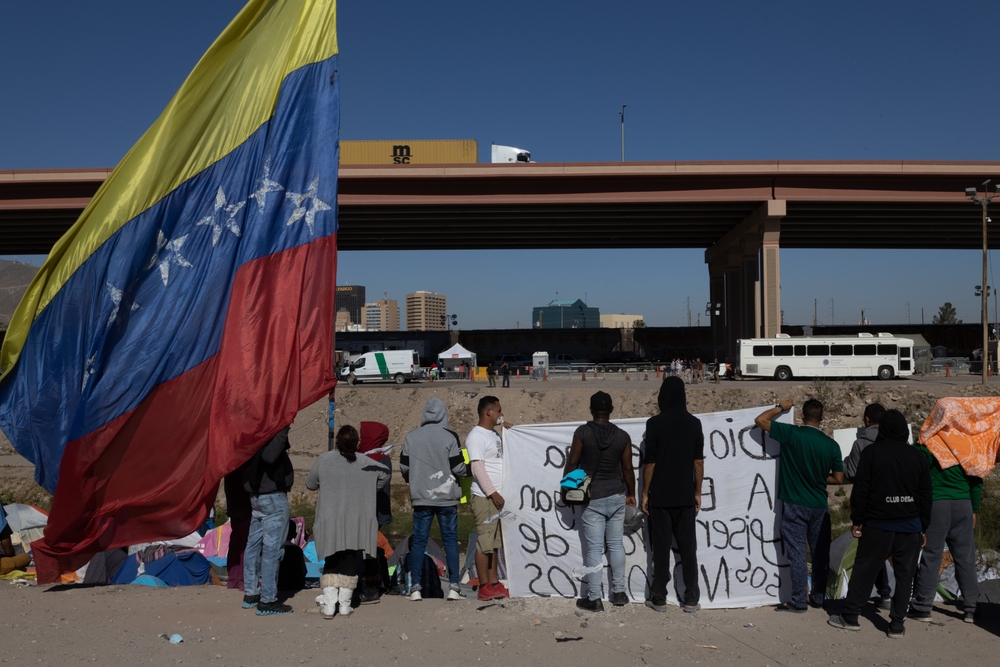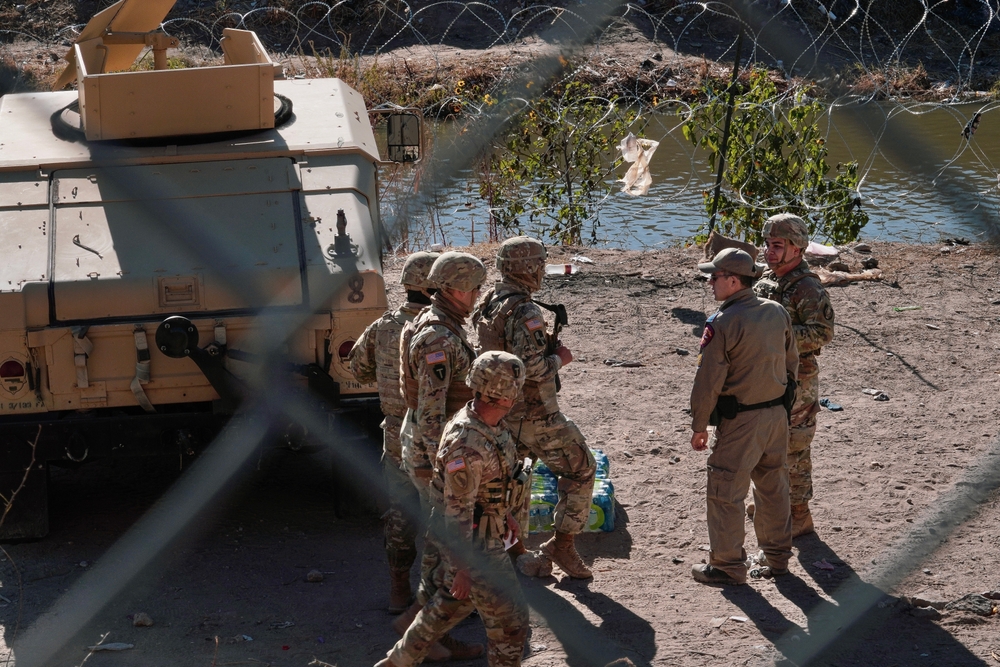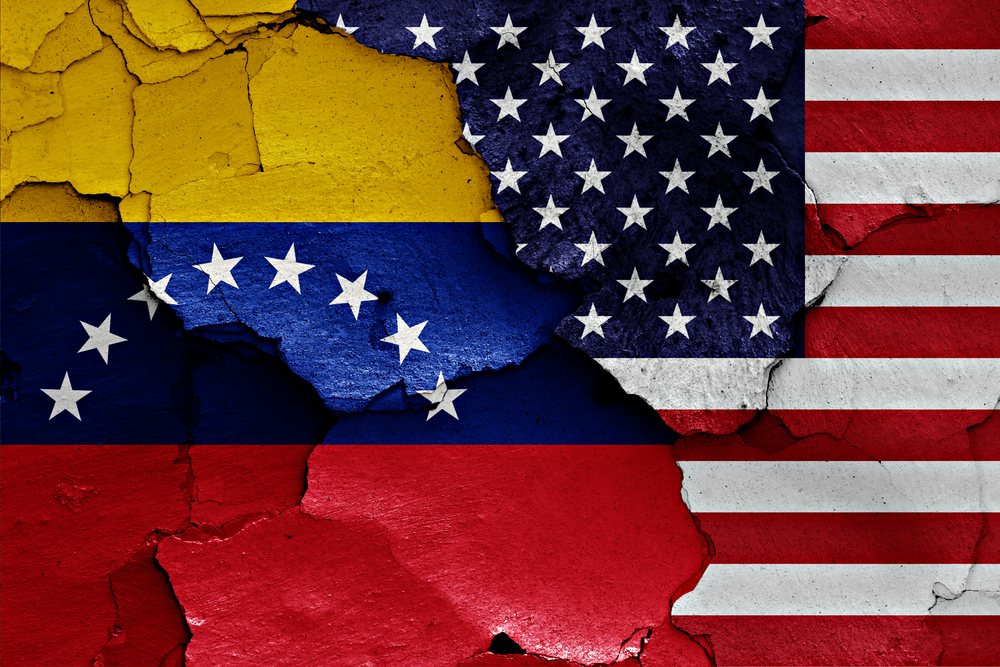Your cart is currently empty!
US-Venezuela tensions rise as US warships arrive in Southern Caribbean

Tensions in the Caribbean are once again drawing global attention, this time as U.S. warships and aircraft converge near Venezuelan waters in one of the largest regional deployments in years. Washington insists the buildup is aimed at disrupting drug cartels that funnel narcotics into North America, but for Caracas, the display of military power is an unmistakable provocation that threatens national sovereignty. The clash of narratives—security versus aggression—highlights not only the fragile relationship between the United States and Venezuela but also the broader geopolitical forces shaping the hemisphere.
The stakes extend beyond military maneuvers. For the United States, the operation serves as both a counter-narcotics mission and a political statement of resolve at home and abroad. For Venezuela, it is framed as yet another chapter in a long history of resisting foreign interference. Around them, smaller Caribbean and Latin American nations are caught between cooperation with U.S. interdiction efforts and concern over escalating tensions in their neighborhood. What unfolds in these waters has implications for regional security, domestic politics, and the balance of power in a contested global order.

The United States has significantly expanded its military presence in the Southern Caribbean, in what officials describe as a major counter-narcotics initiative. The deployment includes seven warships and a nuclear-powered fast attack submarine, alongside advanced surveillance aircraft such as the P-8 spy planes that have been flying intelligence-gathering missions in international waters. Among the naval assets in the region are the USS San Antonio, USS Iwo Jima, and USS Fort Lauderdale, carrying a combined force of around 4,500 service members, including 2,200 Marines. While the U.S. Coast Guard and Navy maintain a regular presence in these waters, the scale and composition of this buildup go far beyond routine patrols, signaling a sharper and more assertive posture.
Washington has justified the operation by pointing to the persistent threat of drug cartels and transnational criminal organizations that operate across Latin America and the Caribbean. President Donald Trump has made combating these networks a centerpiece of his administration’s security agenda, linking the effort not only to the fight against narcotics but also to broader goals of reducing irregular migration and strengthening control of the U.S. southern border. Earlier this year, the administration took the notable step of designating Mexico’s Sinaloa Cartel, along with Venezuela’s Tren de Aragua and other gangs, as global terrorist organizations—a move that underscored its willingness to use military and diplomatic tools against groups traditionally seen as criminal rather than political adversaries.
Despite these declarations, the Pentagon has provided little clarity on the precise scope or duration of the mission, leaving room for speculation about its broader intentions. Officials have suggested that the buildup is meant to enhance interdiction operations and intelligence gathering, but the White House has also emphasized that Trump is prepared to employ “every element of American power” to stop narcotics from entering the United States. For many observers, the combination of expanded naval firepower, intelligence assets, and the administration’s increasingly hardline rhetoric reflects not just an anti-drug operation but also a demonstration of strength in a region where U.S. influence has long been contested.

Venezuela Pushes Back Against U.S. Moves
In response to the growing U.S. military presence in the Caribbean, Venezuelan President Nicolás Maduro and his government have forcefully condemned the buildup as a violation of sovereignty. Venezuela lodged a formal complaint with United Nations Secretary-General António Guterres, accusing Washington of breaching the principles of the U.N. Charter. Samuel Moncada, Venezuela’s ambassador to the U.N., described the operation as a “massive propaganda effort” designed to justify “kinetic action,” a term widely understood to mean military intervention. Caracas has portrayed the deployment not as a narrowly defined counter-narcotics operation but as part of a broader campaign of pressure aimed at destabilizing its government.
Maduro himself has sought to frame the U.S. action as outdated “gunboat diplomacy,” rejecting what he called the diplomacy of “cannons and threats.” By invoking history, he attempted to contrast Venezuela’s stance of sovereignty and independence with what he described as Washington’s reliance on military intimidation reminiscent of a century-old playbook. His government has used this narrative to rally domestic support at a time when Venezuela continues to grapple with economic collapse, sanctions, and widespread political dissent. It also serves to strengthen Maduro’s claim that the nation is under siege from foreign powers, a recurring theme in his rhetoric aimed at consolidating loyalty among his base.
Beyond rhetoric, Venezuela has also taken military steps to reinforce its image of resistance. Maduro announced the deployment of 15,000 troops along the country’s western border with Colombia, citing the need to combat drug trafficking groups and secure national territory. He further called for the training of civilian defense groups every Friday and Saturday, signaling an effort to expand not only the professional military’s readiness but also the mobilization of loyalist citizens. While these moves may not match U.S. military capabilities, they underscore the government’s strategy of portraying itself as prepared to defend Venezuela against external aggression while keeping domestic audiences engaged in a narrative of national defense.

Regional Reactions and International Context
The U.S. naval buildup has not gone unnoticed across the Caribbean and Latin America. According to the White House, several regional governments have voiced support for Washington’s counter-narcotics operations, viewing them as necessary to curb trafficking routes that pass through their waters. Smaller Caribbean nations, which have long struggled with the corrosive effects of drug smuggling on their own security and governance, are often eager to cooperate with U.S. interdiction efforts, even if they stop short of endorsing the broader political implications of the deployment. Their participation lends the United States a measure of legitimacy, though it does not erase the perception that the operation is fundamentally directed at Venezuela.
At the same time, the naval buildup has added to tensions in an already polarized international landscape. Countries sympathetic to Maduro, such as Russia and China, have historically criticized U.S. military actions near Venezuela and may interpret the deployment as another attempt at regime change. While neither Moscow nor Beijing has issued direct responses to this particular operation yet, their support for Maduro’s government in the past—through loans, oil deals, and political backing—suggests they could raise objections in global forums if the situation escalates further. This dynamic illustrates how a regional security operation can quickly become entangled in wider geopolitical rivalries.
For Latin America itself, the U.S.-Venezuela standoff places many governments in a delicate position. Nations such as Colombia and Brazil have tense relations with Caracas and may quietly welcome U.S. pressure, while others prioritize non-intervention and diplomacy. The episode revives longstanding debates within the hemisphere about the role of U.S. power in the region: whether it serves as a stabilizing force against transnational threats or as a heavy-handed actor willing to infringe on sovereignty. That tension remains unresolved, and the naval deployment has brought it to the surface once again.
The Domestic Calculus Behind the Deployment
The timing and scale of the U.S. buildup also reflect domestic political considerations in Washington. President Trump consistently emphasized his administration’s commitment to “law and order,” particularly in the context of immigration and border security. By linking the Caribbean operation to efforts to stem the flow of narcotics into the United States, the White House positioned the deployment as an extension of policies that resonate strongly with Trump’s political base. The language of combating cartels and defending communities from drugs fit neatly into his broader narrative of protecting American families from external threats.
This framing also allowed the administration to connect foreign military action with domestic priorities in a way that could justify significant expenditures and a visible show of force. The decision to label certain cartels as terrorist organizations earlier in the year was not only a symbolic gesture but also a legal mechanism that expanded the range of tools available to U.S. authorities. By elevating criminal groups to the level of global security threats, the administration strengthened its argument for deploying military assets, which otherwise might have seemed disproportionate.
However, the domestic political payoff comes with risks. Critics warn that conflating counter-narcotics operations with geopolitical maneuvering against Venezuela blurs the line between law enforcement and foreign policy. The appearance of using military power to intimidate a regional adversary could undercut U.S. credibility in international forums and alienate allies who prefer cooperative approaches. For Trump, the gamble was that a hardline stance would deliver more political benefits at home than costs abroad, a calculation that highlights how foreign deployments are often inseparable from the rhythms of domestic politics.
Potential Consequences and Risks of Escalation
The immediate danger of the naval buildup lies in the possibility of miscalculation. With U.S. warships and surveillance planes operating close to Venezuelan waters, the risk of accidental encounters or provocative incidents is elevated. Even without direct confrontation, the perception of encirclement can feed Maduro’s narrative of foreign aggression, which in turn justifies further militarization inside Venezuela. If either side misreads the other’s intentions, the situation could spiral into a clash that neither Washington nor Caracas explicitly seeks.
There is also the broader concern of how such deployments affect the stability of the Caribbean region. Smaller nations caught between U.S. pressure and Venezuela’s resistance may find themselves navigating increasingly complex diplomatic terrain. While they may welcome help in combating narcotics trafficking, they are unlikely to support any military action that threatens to destabilize a neighbor. The buildup thus risks pulling regional governments into a conflict dynamic that complicates their own security priorities and foreign relations.
On a global level, escalation could trigger responses from external powers aligned with Venezuela, amplifying the geopolitical stakes. Russia has previously flown bombers to Venezuela and sold arms to its military, while China has invested heavily in the country’s oil sector. Although neither is likely to intervene militarily in a confrontation with the U.S., both could increase diplomatic and economic support to Maduro, further entrenching divisions. The U.S. may find itself not only facing down Caracas but also dealing with a coalition of countries eager to challenge American influence in its traditional sphere of dominance.
An Urgent Call for Diplomacy
As the buildup continues, the overriding question is whether military deployments can truly solve the challenges at hand. While drug cartels are a real and persistent threat, their networks are deeply embedded across borders and cannot be dismantled solely by naval patrols or shows of force. Similarly, Venezuela’s internal crisis—marked by political repression, economic collapse, and mass migration—will not be resolved through intimidation. Lasting stability in the Caribbean requires coordinated diplomacy, regional cooperation, and strategies that address the root causes of insecurity rather than symptoms alone.
For the United States, the temptation to lean on its military power is understandable, particularly given domestic political pressures and the need to demonstrate action. But the costs of escalation—whether through unintended clashes, regional alienation, or geopolitical blowback—could far outweigh the immediate gains of interdiction operations. The U.S. has long sought to portray itself as a partner for stability in the Western Hemisphere. That reputation will be judged not just by the size of its deployments but by its ability to pursue solutions that respect sovereignty while tackling shared challenges.
For Venezuela, the path forward is equally fraught. Maduro’s government continues to cast itself as a victim of imperialist aggression, but the reality is that his country’s political and economic collapse has created fertile ground for criminal networks to thrive. Addressing these issues requires not only resisting foreign pressure but also acknowledging the urgent need for internal reform, governance, and international engagement. Without such steps, Venezuela risks remaining trapped in a cycle of confrontation that ultimately undermines its own sovereignty.
The current standoff is a reminder that the Caribbean is not an isolated stage but part of a larger global struggle over power, influence, and security. The presence of warships and submarines may dominate headlines, but the true test lies in whether leaders can resist escalation and instead choose dialogue, cooperation, and regional problem-solving. In the end, the call is not just for avoiding conflict but for reimagining how the Americas handle shared threats in a way that strengthens both security and sovereignty.
